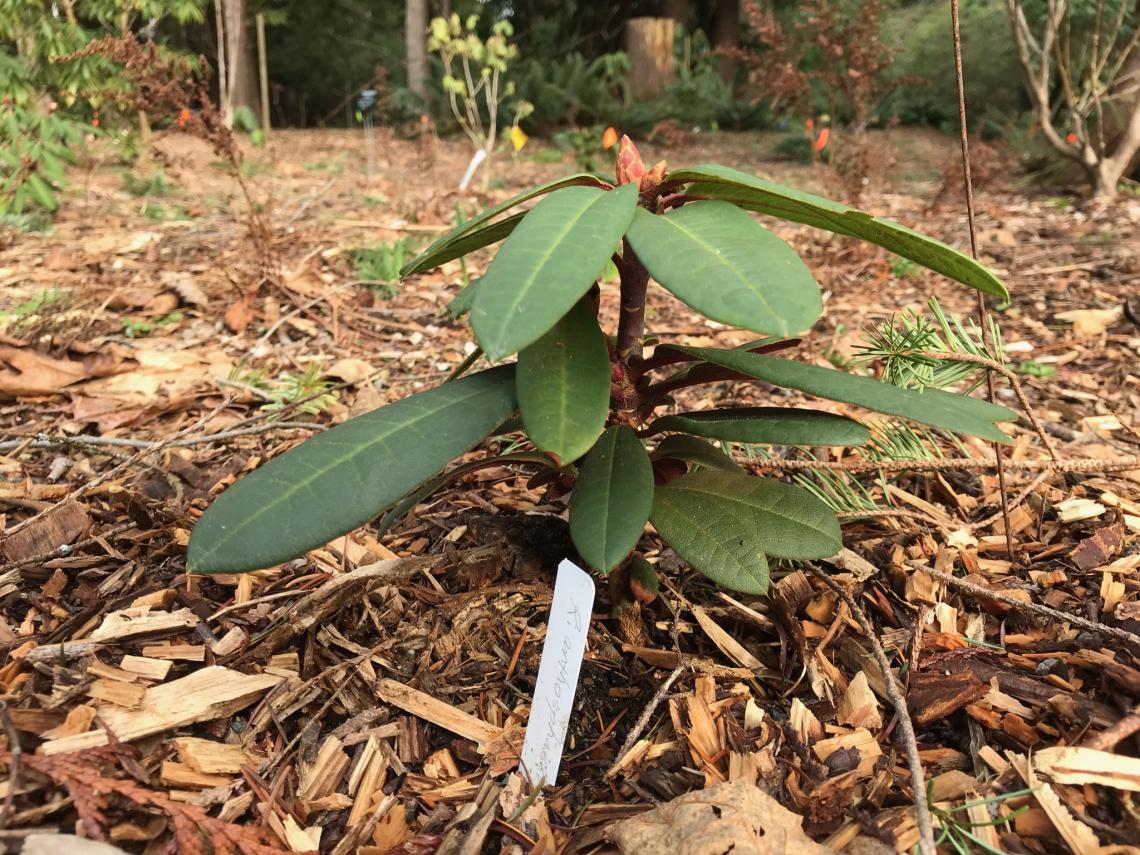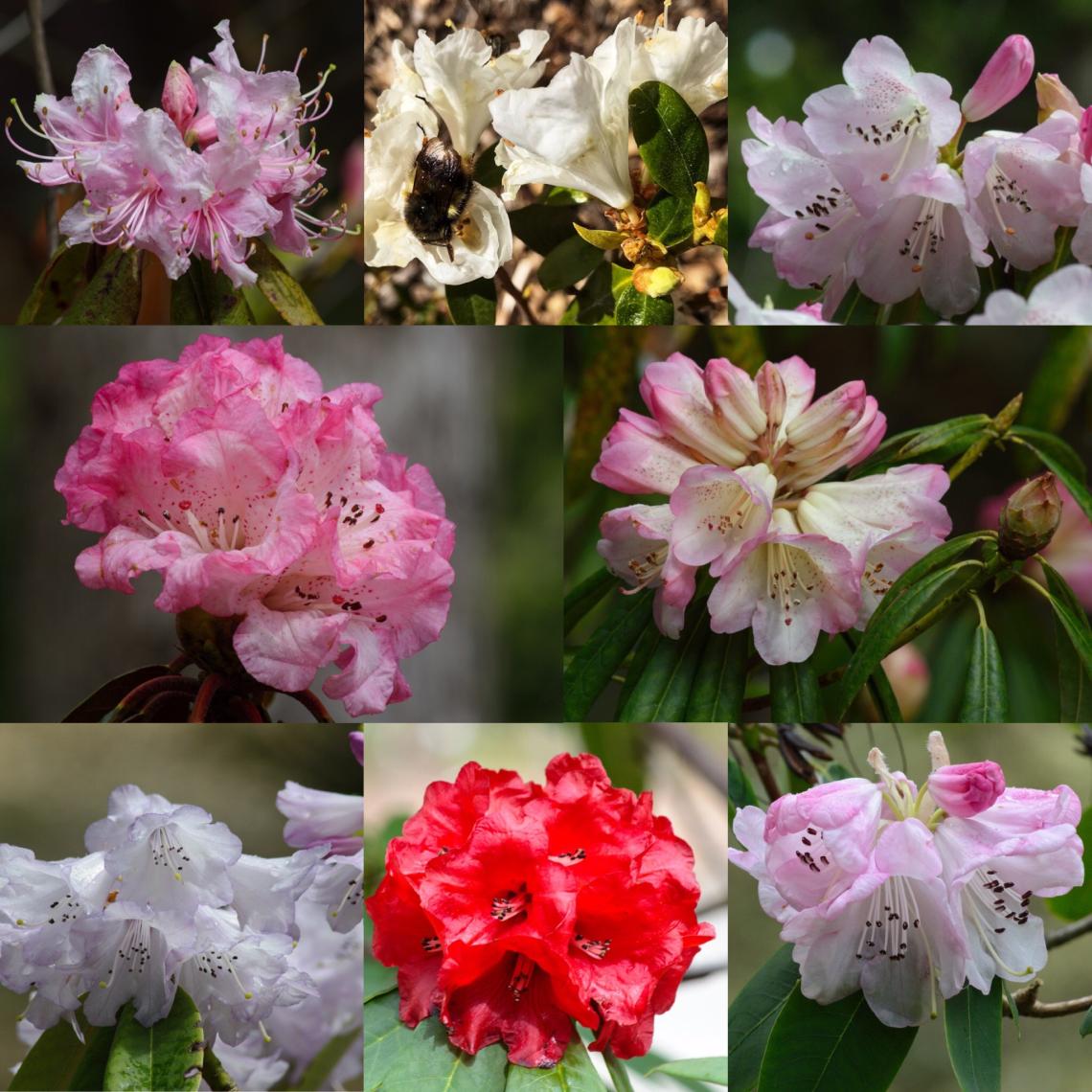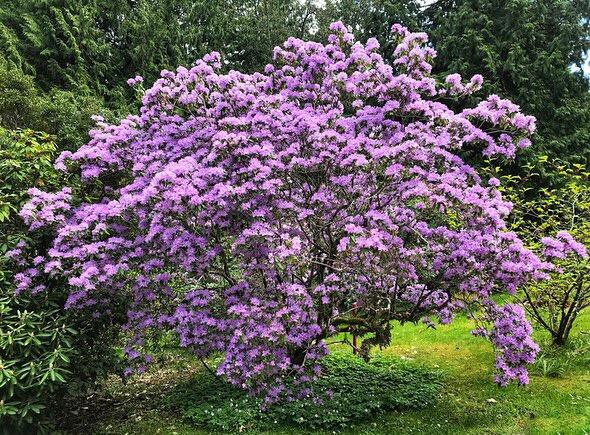by Vancouver Island Master Gardeners Association
Question: How do I care for Rhododendrons?
Answer: Rhododendrons are a staple of the West Coast garden and once established they are reliable, resilient and require minimal care.
Planting a newly acquired Rhododendron in a semi-shaded or early morning sun spot with well drained and humus rich soil provides a great start (some references will disagree with this as they are concerned about sun on frosted plants but that is not of concern here in coastal BC).

Photo courtesy Milner Gardens & Woodland of a Rhododendron planting in the Greig Rhododendron Species Garden from Fall 2019.
Most of our Rhododendrons bloom after any frost issues but in other provinces they can still get hard freezes later in the year than us. It is a bit of a myth that Rhododendrons don’t like sun – just not the full on hot sun of mid-afternoon on a summer day, so plant accordingly. They are similar in many ways to Clematis, roots in shade and heads in sun. Water the dug hole, then spread roots out horizontally, backfill and water in well once planted. The soil surface in the pot should be visible once planted. Recheck after watering to be sure it has not ‘sunk.' A layer of mulch can be applied to protect the roots but do not cover the trunk. Soils and mulch should be four inches away from the trunk to prevent rot.
Proper watering during the first year or two is the most critical. Your fingers are the best guide; if plunged into the soil at the farthest outward leaves' drip line, they come out with soil attached then the moisture is adequate. If dry then water well, allowing the water to drain away several times before adding more. On larger plants use a spade plunged into the soil in the same way – at the drip line to see how far down the moisture goes. Most Rhododendron roots are in the top 18 – 24 inches of soil, so if your spade comes out dry more water is needed.
Fertilizing Rhododendrons is done shortly after blooming. Organic commercial fertilizers are preferable or alternatively you can purchase the individual components and mix your own. Do not fertilize after mid-July as leaf growth after that time may not be sufficiently mature or hardy enough to survive the coming winter.
Pruning is really only done to remove dead, diseased or dying branches, but a more severe pruning will encourage new growth. Young plants need to be ‘tipped’ – removing the early new growth of tips in spring to encourage new branching. Deadheading old spent flowers is aesthetically pleasing but not absolutely necessary. Just be sure to only remove the pieces above the two new shoots growing just below the flower head.

Photos courtesy Milner Gardens & Woodland of a variety of Rhododendron blooms in the Greig Rhododendron Species Garden from Spring 2019.

Photo courtesy Milner Gardens & Woodland of Rhododendron 'Royston Blue' from spring 2019.

Photo courtesy Milner Gardens & Woodland of Greig hybrid Rhododendron 'Veronica Milner' from Spring 2019.
For gardening questions in the growing season, contact the Gardening Advice Line.

